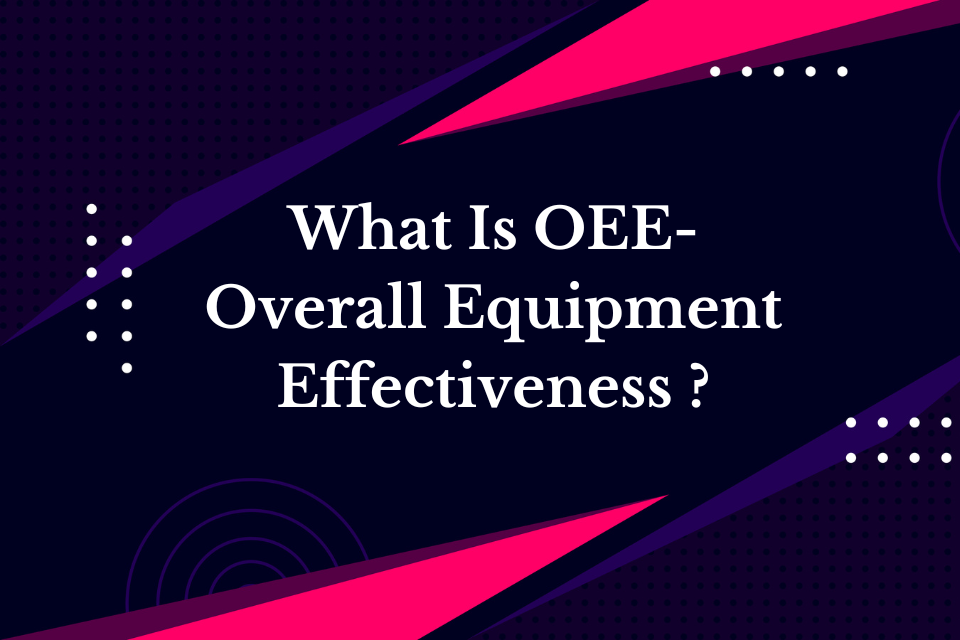What Is OEE- Overall Equipment Effectiveness ?

Introduction:
Overall Equipment Effectiveness (OEE) is a universally recognized metric used to measure manufacturing productivity. By evaluating the efficiency and effectiveness of a manufacturing process, OEE provides insight into how well manufacturing equipment is utilized. At its core, OEE seeks to identify the percentage of planned production time that is genuinely productive.
Three Core Metrics of OEE:
OEE is calculated by examining three primary metrics: Availability, Performance, and Quality. Each metric provides a unique lens into the effectiveness of the manufacturing equipment:
- Availability: This measures the actual production time against the planned production time. Factors such as equipment failures, unplanned maintenance, and setup time can reduce availability.
- Performance: This metric evaluates the speed at which the production operates as compared to the maximum speed possible. Reasons for performance shortfalls can include suboptimal operating speeds and frequent stops.
- Quality: The quality metric assesses the number of quality products produced against the total number of products manufactured. It accounts for defective products or any products that do not meet the quality standard and need rework.
Calculating OEE:
The formula for OEE is relatively straightforward:
Each component (Availability, Performance, Quality) is represented as a percentage, and the resulting OEE score is also a percentage, with 100% indicating perfect production.
Importance of OEE:
- Benchmarking: OEE provides a standardized metric that allows companies to benchmark their manufacturing processes against industry standards or competitors.
- Identifying Issues: By breaking down production efficiency into availability, performance, and quality, OEE helps in pinpointing specific areas of concern. For instance, a low availability score could signify a need for better maintenance practices.
- Continuous Improvement: OEE is not just a metric to be observed but is a tool for continuous improvement. Tracking OEE over time can help companies identify trends, implement corrective actions, and measure the results of those actions.
Potential Misconceptions:
While OEE is a powerful metric, it’s essential to avoid certain pitfalls:
- Targeting 100% OEE: While a perfect score sounds ideal, it’s often not realistic due to inevitable disruptions in manufacturing. Instead, companies should aim for industry-specific benchmarks and focus on continuous improvement.
- Overemphasis on OEE: While OEE is a vital metric, it shouldn’t be the sole focus. It needs to be considered alongside other essential metrics to provide a comprehensive view of manufacturing health.
- Misinterpreting Data: It’s crucial to ensure that the data feeding into the OEE calculation is accurate. Inaccurate data can lead to misleading OEE scores and misguided efforts to improve.
Conclusion:
Overall Equipment Effectiveness (OEE) is an invaluable tool in the manufacturing sector. By offering a comprehensive view of equipment efficiency, OEE helps companies optimize their manufacturing processes, reduce waste, and increase profitability. However, like any tool, its effectiveness depends on its correct application. When used judiciously, alongside other metrics and with a clear understanding of its components, OEE can drive significant improvements in the manufacturing world.








